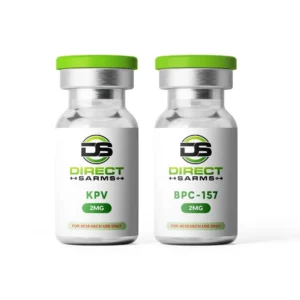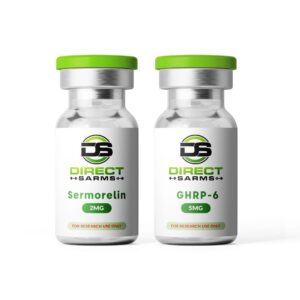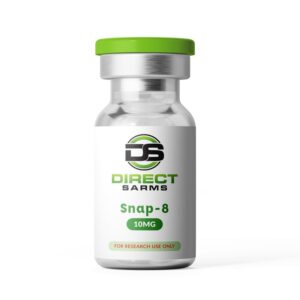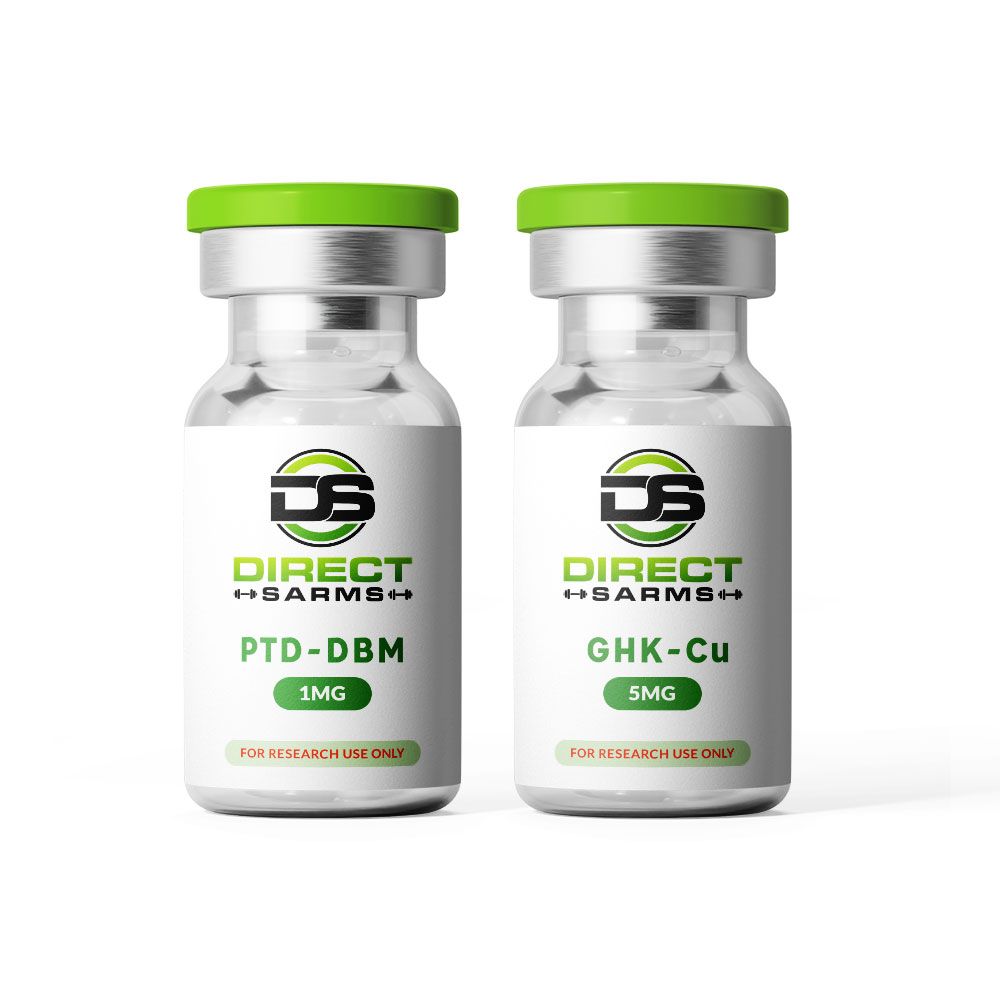PTD-DBM and GHK-Cu Peptide Stack
$44.05 Original price was: $44.05.$39.65Current price is: $39.65.
Combining GHK-Cu and PTD-DBM peptides in hair treatments may offer a comprehensive approach to promoting hair growth, strength, and overall hair health. Studies suggest that the synergistic effects of GHK-Cu stimulating collagen production and PTD-DBM inducing hair neogenesis could result in enhanced hair density, shine, and resilience.
PTD-DBM and GHK-Cu Peptide Stack contains:
1mg PTD-DBM Peptide Vial
5mg GHK-Cu Peptide Vial
487 in stock
487 in stock
First time customer gets 15% discount code = 1storder
PTD-DBM and GHK-Cu Peptide Stack
Using PTD-DBM and GHK-Cu peptides together can provide a synergistic effect on skin rejuvenation. PTD-DBM is known for its ability to enhance collagen synthesis and improve skin elasticity, while GHK-Cu has antioxidant and anti-inflammatory properties that promote wound healing and stimulate the production of growth factors.
By combining these peptides, you can optimize their individual benefits and achieve more comprehensive results. PTD-DBM helps to increase the absorption and penetration of GHK-Cu into the skin, allowing it to exert its rejuvenating effects more effectively. The combination of PTD-DBM and GHK-Cu peptides has been shown to reduce the appearance of wrinkles, fine lines, and age spots, resulting in smoother, firmer, and more youthful-looking skin.
PTD-DBM is also a well-known scalp treatment for follicle regeneration. It saves the follicle at the stem cell level by stopping it from shrinking. PTD-DBM treatment can aid in the prevention of hair loss and stimulation of new hair follicle growth, which is promising for aging individuals or those suffering from illnesses that cause hair loss such as alopecia.
PTD-DBM
PTD-DBM peptide, also known as Protein transduction domain-Dvl-binding motif peptide, is a promising ingredient in the field of hair regrowth and rejuvenation. This engineered peptide works by activating the Wnt/β-catenin signaling pathway, which plays a crucial role in hair follicle regeneration. By interfering with the binding of CXXC5 to Dishevelled (Dvl), an upstream regulator of the pathway, PTD-DBM helps promote hair growth.
Studies have shown that PTD-DBM can inhibit the follicle shrinking action of hormones and enzymes, rescuing the hair follicle from further damage. It has been observed to be effective in restoring hair loss caused by factors such as androgenetic alopecia.
In addition to its hair regrowth properties, PTD-DBM also demonstrates potential in skin rejuvenation. Its ability to enhance collagen synthesis and improve skin elasticity makes it beneficial for reducing the appearance of wrinkles and fine lines. Furthermore, its antioxidant and anti-inflammatory properties contribute to wound healing and overall skin health.
Buy PTD-DBM from Direct Sarms Sweden online today!
GHK-Cu
GHK-Cu peptide, also known as Copper Tripeptide-1 or Glycyl-Histidyl-Lysine-Copper, is a naturally occurring copper complex that has gained attention for its potential regenerative and protective properties. This peptide has been found to stimulate blood vessel and nerve outgrowth, increase collagen, elastin, and glycosaminoglycan synthesis, and support various cellular functions.
GHK-Cu peptide has shown promise in promoting skin remodelling, wound healing, and regeneration. It exhibits antioxidant and anti-inflammatory effects, making it beneficial for skincare formulations targeting aging and skin rejuvenation.
GHK-Cu peptide is available in various forms, such as serums and powders, and is increasingly being explored for its potential in hair growth treatments. Its natural occurrence in the body and multiple locations, such as plasma, saliva, and urine, highlight its significance in biological processes.
Buy GHK-Cu from Direct Sarms Sweden online today!
PTD-DBM and GHK-Cu Peptide Stack
Although the mechanisms of action of PTD-DBM and GHK-Cu peptides differ, using both peptides together can provide additional benefits than using each one separately.
Hair Growth
Combining PTD-DBM and GHK-Cu peptides can have a synergistic effect on hair growth by addressing multiple factors that contribute to hair loss and promoting a healthy scalp environment. GHK-Cu peptide has been shown to stimulate blood vessel formation and enhance the production of collagen and elastin, which are essential for healthy hair follicles and overall hair growth.
PTD-DBM peptide, on the other hand, activates the Wnt/β-catenin signalling pathway, promoting the regeneration of hair follicles and counteracting the effects of hormones and enzymes that cause hair loss. By using PTD-DBM and GHK-Cu peptides together, you can potentially improve the nutrient supply to hair follicles, increase hair shaft thickness, promote new hair growth, and support overall scalp health, leading to fuller, thicker, and healthier-looking hair.
Enhance Wound Healing
When used together, GHK-Cu and PTD-DBM peptides can synergistically enhance the wound healing process by supporting various aspects of tissue repair and regeneration. GHK-Cu peptide has been found to promote angiogenesis, collagen synthesis, and antioxidant activity, which are crucial for the formation of new blood vessels, collagen deposition, and protection against oxidative stress during wound healing.
PTD-DBM peptide, with its ability to stimulate the Wnt/β-catenin signaling pathway, can accelerate cell proliferation and migration, leading to faster wound closure and re-epithelialization. By combining the benefits of PTD-DBM and GHK-Cu peptides, you can potentially improve the overall healing response, reduce scar formation, and enhance the quality of healed tissue, ultimately promoting better and more efficient wound healing.
Increased Collagen Production
The combination of PTD-DBM and GHK-Cu peptides can effectively enhance collagen production, leading to improved skin elasticity and firmness.
GHK-Cu peptide has been shown to stimulate the synthesis of collagen, a crucial protein responsible for maintaining the structural integrity of the skin. PTD-DBM peptide, by activating the Wnt/β-catenin signaling pathway, can further promote collagen production and deposition, supporting the formation of new connective tissue.
By using GHK-Cu and PTD-DBM peptides together, you can potentially boost collagen synthesis, improve skin texture and tone, and minimize the appearance of wrinkles and fine lines, resulting in a more youthful and rejuvenated complexion.
Like the GHK-Cu and PTD-DBM Peptide Stack? Check out our full range of peptide stacks from Direct SARMs Sweden
References:
[1] Targeting of CXXC5 by a Competing Peptide Stimulates Hair Regrowth and Wound-Induced Hair Neogenesis, Journal of Investigative Dermatology
Volume 137, Issue 11, November 2017, Pages 2260-2269 by Soung-Hoon Lee, Seol Hwa Seo, et al.
[2] The Human Tripeptide GHK-Cu in Prevention of Oxidative Stress and Degenerative Conditions of Aging: Implications for Cognitive Health, Oxidative Medicine and Cellular Longevity, vol. 2012, Article ID 324832, 8 pages, 2012. by Loren Pickart, Jessica Michelle Vasquez-Soltero, Anna Margolina
[3] Regenerative and Protective Actions of the GHK-Cu Peptide in the Light of the New Gene Data. Int J Mol Sci. 2018 Jul 7;19(7):1987. by Pickart L, Margolina A.
PTD-DBM
Sequence: RRRRRRRRGGGGRKTGHQ ICKFRKC
Molecular Formula: C124H22N61O28S2
Molecular Weight: 3082.65
GHK-Cu
Sequence: Gly-His-Lys
Molecular Formula: C28H52CuN12O8
Molecular Weight: 748.346 g/mol
ALL CONTENT AND PRODUCT INFORMATION AVAILABLE ON THIS WEBSITE IS FOR EDUCATIONAL PURPOSES ONLY.
DISCLAIMER: These products are intended solely as a research chemical only. This classification allows for their use only for research development and laboratory studies. The information available on our Sweden Direct Sarms website is provided for educational purposes only. These products are not for human or animal use or consumption in any manner. Handling of these products should be limited to suitably qualified professionals. They are not to be classified as a drug, food, cosmetic, or medicinal product and must not be mislabelled or used as such.
Related Products
You may also like…
-
Sale!

BPC-157 and KPV Peptide Stack
$32.03Original price was: $32.03.$28.83Current price is: $28.83. -
 NEW
NEWSermorelin and GHRP-6 Peptide Stack
$38.36Original price was: $38.36.$34.52Current price is: $34.52. -
Sale!

FOXO4-DRI Peptide Vial 10mg
$246.78 – $258.00 This product has multiple variants. The options may be chosen on the product page -

Snap 8 Peptide Vial 10mg
$25.01 – $36.24 This product has multiple variants. The options may be chosen on the product page






